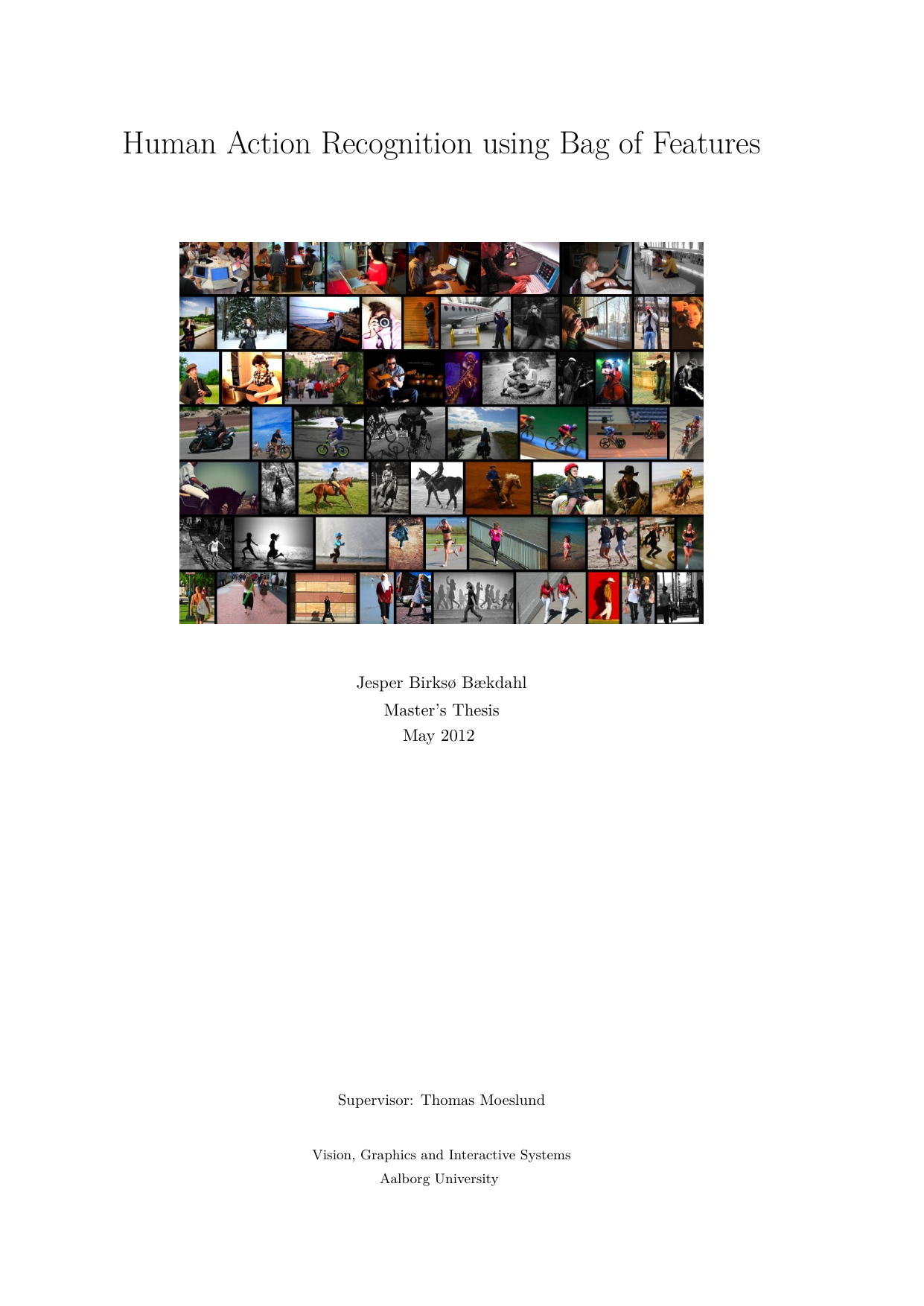
Human Action Recognition using Bag of Features
Translated title
Author
Term
4. term
Publication year
2012
Submitted on
2012-05-31
Pages
51
Abstract
This thesis explores the popular bag-of- features framework for human action recogni- tion. Different feature detectors and descrip- tors are described and compared. The combination of the Harris3D detector and the HOG/HOF descriptor is chosen for use in the experimental setup. Unsupervised and su- pervised classification methods are compared to show the difference in performance. The supervised algorithm used is a support vector machine, and the unsupervised algorithms are k-means clustering, and affinity propagation, where the latter has not been used before for action recognition. The algorithms are tested on two different datasets. The simple KTH dataset with 6 classes, and the more compli- cated UCF50 with 50 classes. The SVM classification obtains good results on both KTH and UCF50. Of the two unsu- pervised methods, affinity propagation obtains the best performance. SVM outperforms both of the unsupervised algorithms. The strategy used for building the vocabulary, which is a central part of the bag-of-features framework is tested. The results show, that increasing the number of words will slightly increase the classifier performance.
